The Taj Mahal: A Timeless Symbol of Love 💖 and Architecture
Why Does the Taj Mahal Capture Our Hearts?
Imagine a love story so intense that it gave birth to a masterpiece admired for centuries. The Taj Mahal is not just a building; it is a poem in white marble. Located in Agra, India, this iconic structure continues to mesmerize millions. Let’s dive into its fascinating history, incredible design, and mind-boggling facts.
The Love Story Behind the Taj Mahal
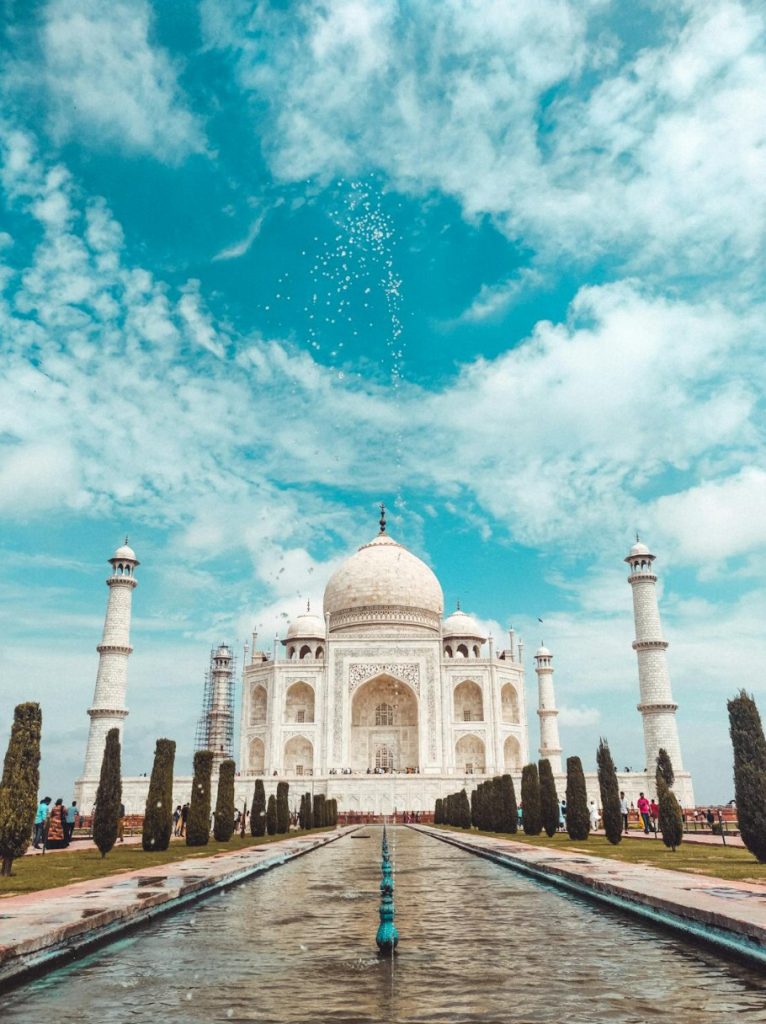
Who Was Shah Jahan Before He Built the Taj Mahal?
Before becoming emperor, Shah Jahan was known as Prince Khurram. His life took a romantic turn when he met Arjumand Bano Begum, later called Mumtaz Mahal, meaning the “Jewel of the Palace.”
Fun Fact: Shah Jahan married her as his third wife, showing how special she was to him despite royal traditions.
Why Was the Taj Mahal Built?
When Mumtaz Mahal passed away giving birth to their 14th child, Shah Jahan’s grief led to the creation of the Taj Mahal as her mausoleum. It’s often called “a teardrop on the cheek of time.”
The Architecture: Beauty in Every Detail
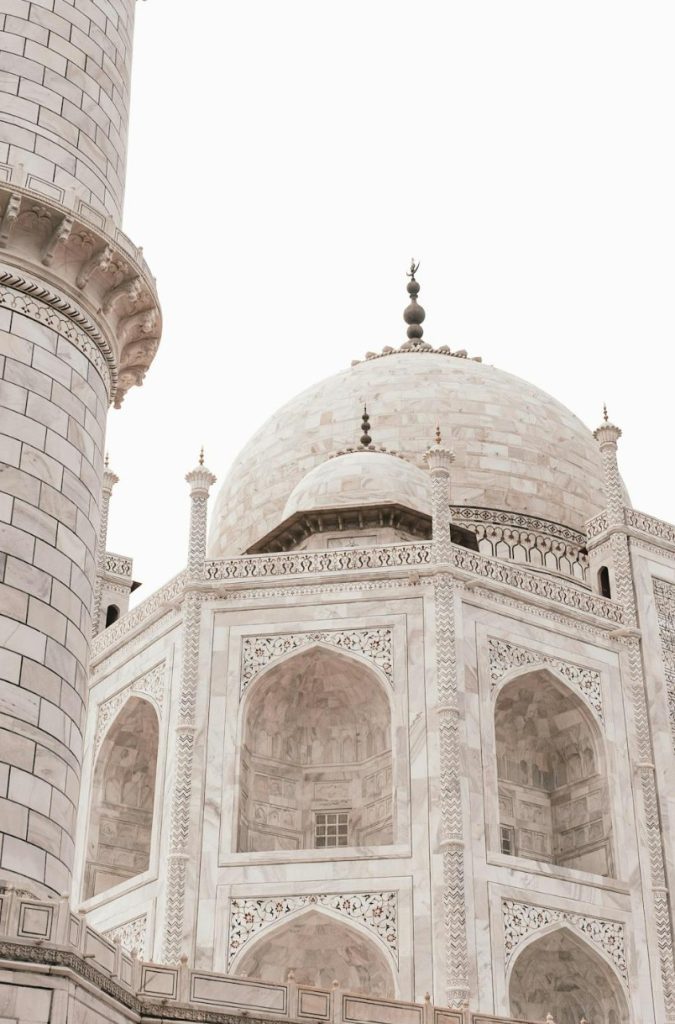
How Big Is the Taj Mahal?
Standing at 73 meters (240 feet) tall, the Taj Mahal is a marvel of proportions. Its symmetrical design ensures every side mirrors the other.
Table: Key Dimensions of the Taj Mahal
| Feature | Measurement |
|---|---|
| Dome Height | 73 meters (240 ft) |
| Complex Area | 17 hectares |
| Time to Build | 22 years |
| Workforce | 22,000 people |
Materials: The Global Puzzle
The Taj Mahal was built using marble sourced from Rajasthan, China, Tibet, Sri Lanka, and Arabia. 28 varieties of precious stones like lapis lazuli and jade added brilliance.
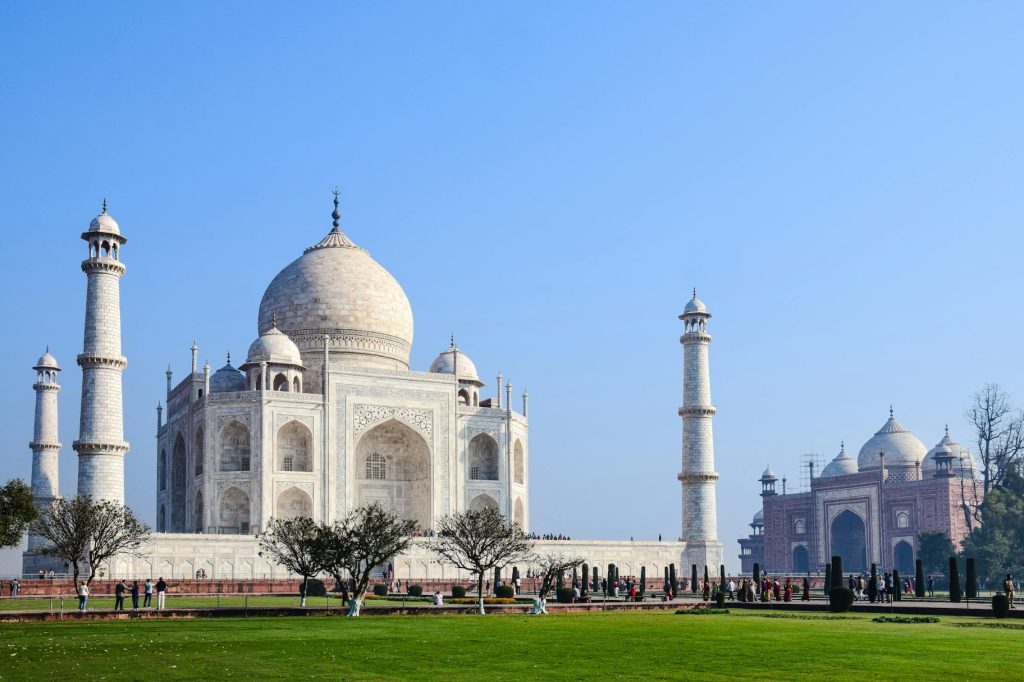
Fun Fact: Over 1,000 elephants transported materials to the site!
Changing Colors: The Magic of the Daylight
Depending on the time of day, the Taj Mahal appears:
- Pinkish in the morning
- Milky white in the evening
- Golden under moonlight
This effect is often compared to the changing moods of a woman—a poetic nod to Mumtaz Mahal.
Historical Events: From Glory to Defacement
British Era: Loot and Restoration
During the 1857 Indian Rebellion, British soldiers removed precious stones from the Taj Mahal’s walls. Later, Lord Curzon, a British viceroy, ordered its restoration and added a lamp in the interior chamber.
- Garden Transformation: The original garden, full of roses and daffodils, was replaced by British-style lawns.
The Legend of the Black Taj Mahal
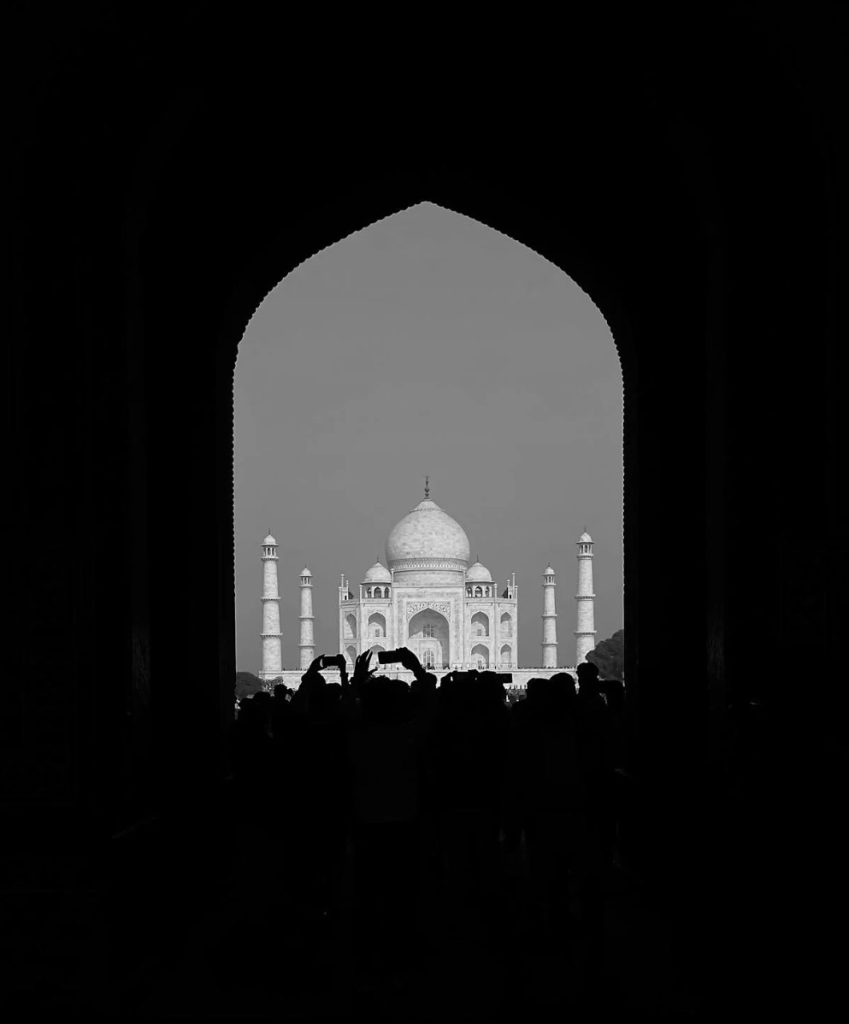
Shah Jahan dreamed of building a black marble Taj Mahal on the opposite bank of the Yamuna River. However, his son Aurangzeb placed him under house arrest, ending this vision.
Did You Know? Shah Jahan spent his last years gazing at the Taj Mahal from his prison window.
Cultural and Religious Significance
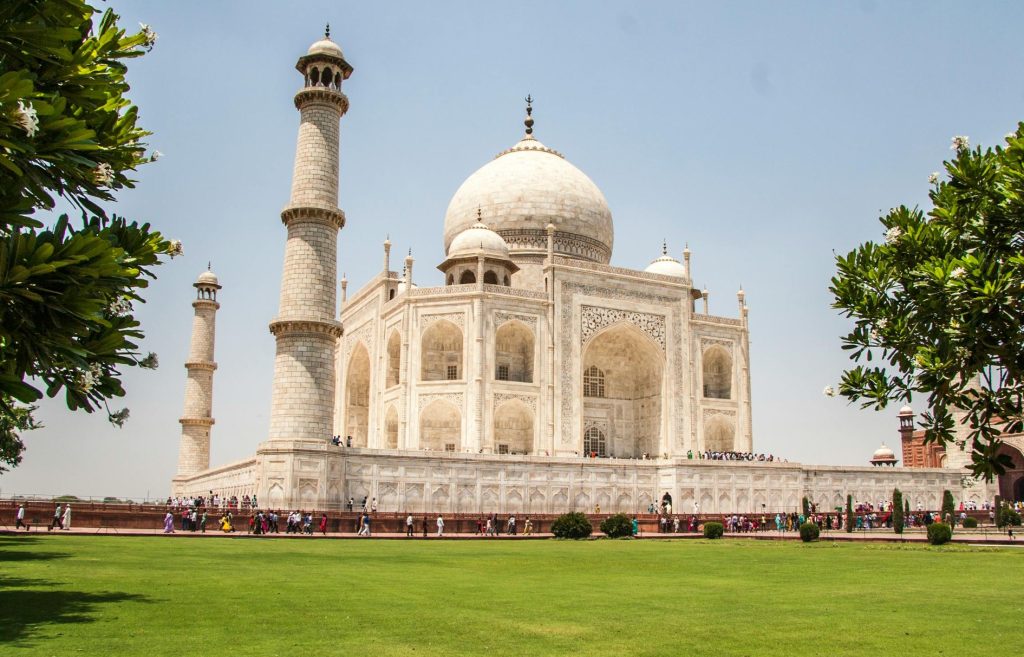
Calligraphy and Quranic Verses
The Taj Mahal’s walls feature Quranic inscriptions and 99 names of Allah. This aligns with Islamic traditions and adds a spiritual dimension to its grandeur.
Burial Traditions
Despite its opulence, Shah Jahan and Mumtaz Mahal’s graves are plain crypts, adhering to Islamic customs forbidding ornate tombs.
Tourism and Global Recognition
How Popular Is the Taj Mahal?
With 2-4 million annual visitors, including 200,000 foreigners, the Taj Mahal is a global attraction.
Table: Visitor Statistics
| Year | Total Visitors (in millions) |
| 2010 | 2.1 |
| 2015 | 3.2 |
| 2023 | 4.0 |
UNESCO and Modern Recognition
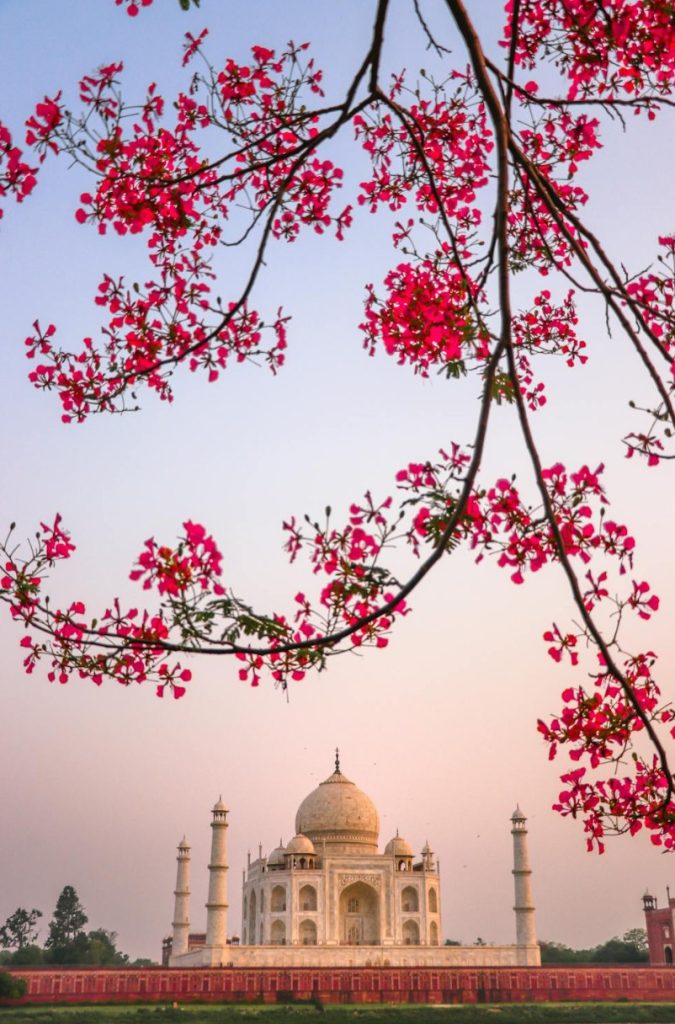
Declared a UNESCO World Heritage Site in 1983, the Taj Mahal became one of the New Seven Wonders of the World in 2007, receiving over 100 million votes.
Lesser-Known Facts About the Taj Mahal
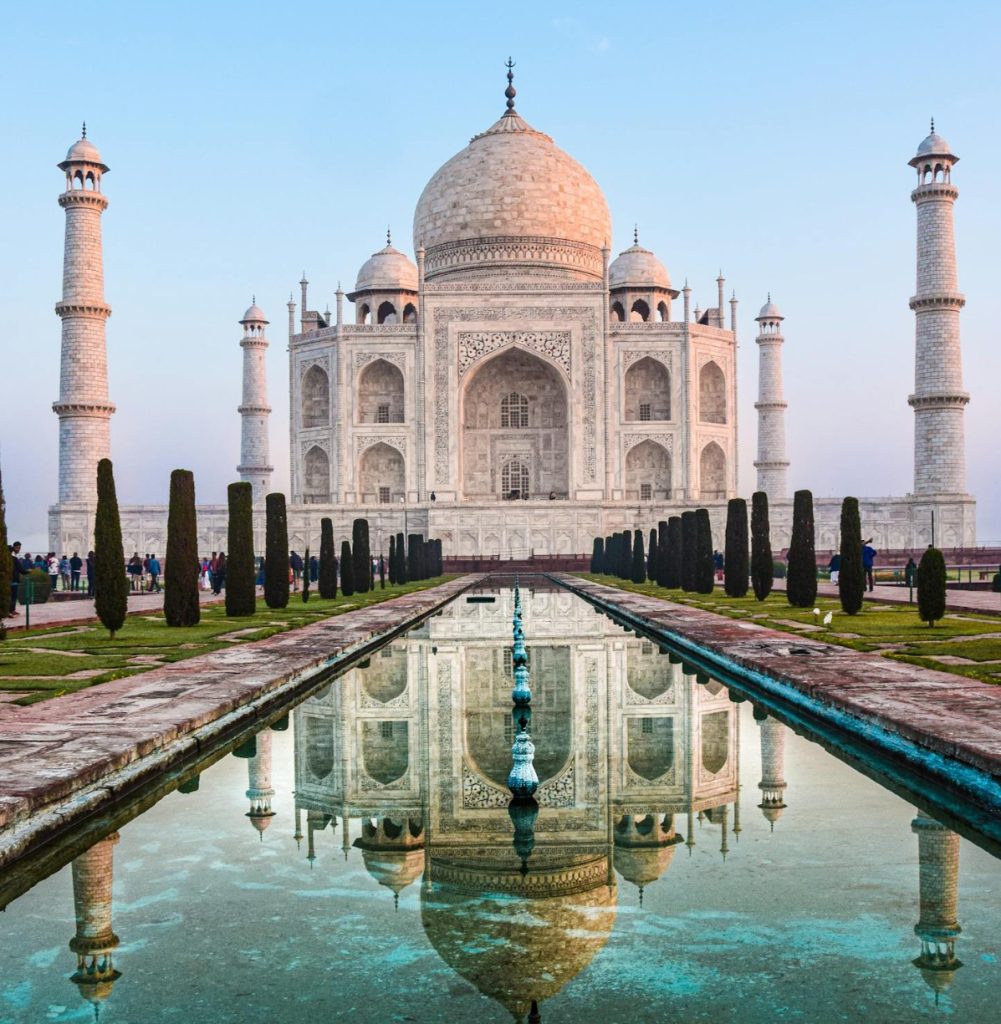
- Labor Force: Over 22,000 artisans worked on the Taj Mahal, including stonecutters and painters.
- Symmetry: Its four sides are perfectly identical.
- Gardens: Cover 17 hectares, featuring intricate designs.
- Historical Theft: The British defaced it in the 19th century.
- Mystical Design: Legend says Shah Jahan’s grief turned his hair white in months.
Conclusion: Why the Taj Mahal Will Always Be Iconic
The Taj Mahal is more than a building; it is a symbol of eternal love, architectural brilliance, and cultural richness. Despite challenges over centuries, it continues to inspire awe and admiration.
So, whether you’re an architecture buff, a history lover, or a romantic, the Taj Mahal has something for everyone. Add it to your travel bucket list, and you won’t be disappointed!
References
- UNESCO World Heritage Center. (n.d.). Taj Mahal.
- Ministry of Tourism, Government of India. (2023).
- BBC History. (2022). Shah Jahan and the Taj Mahal.
